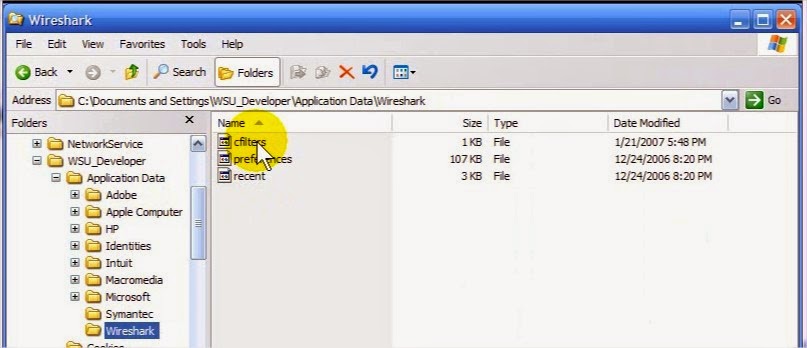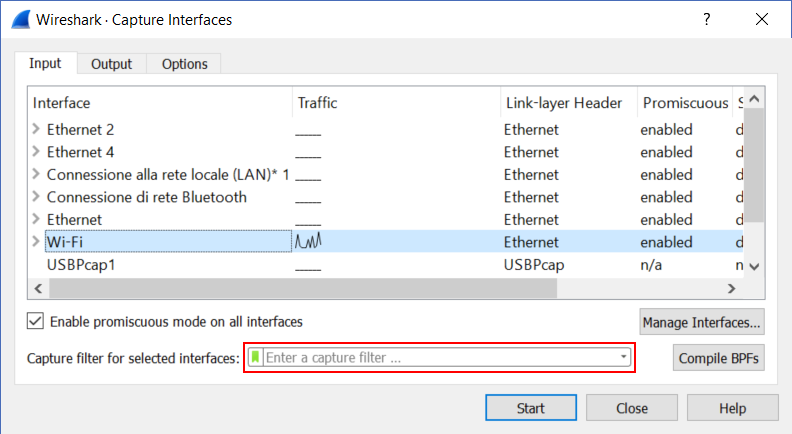

- #WIRESHARK CAPTURE FILTER INTERFACE HOW TO#
- #WIRESHARK CAPTURE FILTER INTERFACE INSTALL#
- #WIRESHARK CAPTURE FILTER INTERFACE SOFTWARE#

The actual host names of the devices, captures may be run without -n to showĪnother reason to use -n, is to be “sneaky.” One means of detecting packetĬapturing is looking for spikes and patterns in DNS PTR lookups. Though, and in familiar environments where the PTR records are known to provide Also, IP addresses are typically easier to readĪnd understand than their PTR records. The best practice is to always use -n because it eliminates the delay causedīy performing the reverse lookup between when tcpdump captures a packet and This generates a significant amount of DNS traffic in capturesĭisplaying large volumes of traffic. Specified, tcpdump will perform a reverse DNS (PTR) lookup for each IPĪddress. Of packet capturing and interpretation of the results is outside the scope ofĭo not resolve IP addresses using reverse DNS. Reader with enough knowledge for basic troubleshooting. This section is intended to provide an introduction to this topic and leave the It provides is also necessary, which can require an in-depth understanding of
#WIRESHARK CAPTURE FILTER INTERFACE HOW TO#
Options, is nearly 1200 lines long and 67k.Īfter learning to use tcpdump, knowledge of how to interpret the data Over 50 different command line flags, limitless possibilities with filterĮxpressions, and its man page, providing only a brief overview of all its The tcpdump program is an exceptionally powerful tool, but that also makes
#WIRESHARK CAPTURE FILTER INTERFACE SOFTWARE#
Included in pfSense® software and is usable from a shell on the console or over Most UNIX and UNIX-like operating system distributions, including FreeBSD. The tcpdump program is a command line packet capture utility provided with pfSense® software Configuration Recipes.Tip: you can always use filter in Wireshark to just display the packets you want to see. You should use your own screenshot.ĭo you see any parallel connections your browser makes? If so, how many can you see in your screenshot?

Again, use Wireshark to capture the traffic while you open up the page.Įxample screenshot below. Now, we will open a webpage with embeded objects (e.g., cnn.com which has a lot of images/videos embeded) in a browser. Example screenshot below.ĭescribe the TCP packets that you see, i.e., how each packet corresponds to TCP handshake, data transfer and closing connection steps.

After the curl/wget is done, stop the capture in Wireshark. Warning: keep your other network activities to the minimum for a better experience, e.g., avoid streaming Netflix when capturing in Wireshark. Then you should be able to see packets flowing! Click the red square button on top to stop the capture. On the left side, select one (or more) interfaces that you want to capture from, then click “Start”. If you run into any problems, you can refer to for more detailed help.
#WIRESHARK CAPTURE FILTER INTERFACE INSTALL#
On Mac and Linux, you can also install from command line (homebrew/macports, yum install, apt-get install). You can find installation instructions here: We will use Wireshark, a network packet capture tool, to look at TCP packets when grabbing a webpage.


 0 kommentar(er)
0 kommentar(er)
